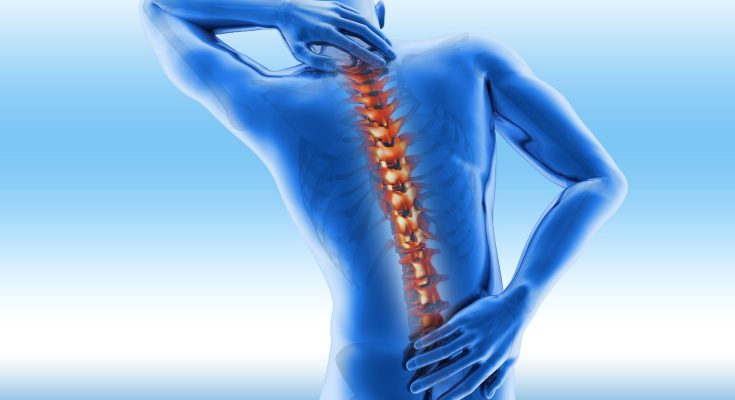The spine is one of the most vital structures in the human body, serving as both a physical support system and a central hub for communication between the brain and the rest of the body. Yet, in the midst of busy schedules and demanding workloads, it is often neglected until discomfort or pain forces it into awareness. Caring for the spine daily does not require drastic changes but rather consistent, intentional habits that preserve strength, flexibility, and alignment. For professionals who spend long hours at a desk or in meetings, investing in spinal health is as critical as maintaining strong financial systems in a business—it ensures stability, resilience, and long-term performance.
One of the most common threats to spinal health is prolonged sitting, particularly in environments where posture becomes an afterthought. Hours spent hunched over a laptop or leaning into conference calls can lead to strain on the lower back and neck, gradually eroding proper alignment. The spine thrives on movement, and immobility is one of its greatest enemies. Even brief breaks throughout the day to stand, stretch, or walk can counteract the negative effects of sedentary routines. Just as a business requires periodic evaluations to ensure it stays on course, the spine benefits from regular check-ins, moments where posture is adjusted and the body is allowed to reset.
Daily movement plays a crucial role in supporting spinal health. Exercises that strengthen the core muscles provide the spine with essential support, reducing the likelihood of injury and improving overall posture. This does not mean hours at the gym are required. Simple practices such as controlled breathing, gentle yoga stretches, or short walks contribute to a more stable and resilient spine. These small acts are like consistent deposits into a savings account—individually modest but collectively transformative over time. A strong spine enhances not only physical comfort but also mental clarity, since pain and stiffness can easily cloud focus and productivity.
Ergonomics is another critical factor in caring for the spine. The design of the workspace has a direct impact on spinal health, often without individuals realizing it. A chair that does not provide lumbar support or a monitor positioned too low forces the body into compensatory postures that strain muscles and joints. Over time, this leads to chronic discomfort that undermines performance. Adjusting the height of a desk, positioning a screen at eye level, and ensuring feet rest flat on the floor are simple but powerful changes. Much like optimizing business processes to reduce inefficiencies, refining the work environment creates conditions that support health rather than erode it.
Hydration and nutrition also contribute to spinal well-being, though they are often overlooked. The spine’s intervertebral discs, which act as cushions between the vertebrae, rely on proper hydration to maintain flexibility and absorb shock. Inadequate fluid intake can reduce their effectiveness, making the spine more vulnerable to stiffness and pain. Similarly, a diet rich in calcium, vitamin D, and other essential nutrients strengthens bones and connective tissues. These foundational supports are no different from the financial reserves that sustain a business during challenging times; they ensure the spine remains strong and adaptable in the face of daily demands.
Rest and recovery are equally important. Sleep is when the body repairs and regenerates, and the spine is no exception. The quality of a mattress and the position in which one sleeps can have long-term implications for spinal health. A mattress that supports natural spinal alignment and sleeping positions that avoid excessive twisting or curvature provide restorative rest that sets the tone for the day ahead. Professionals who undervalue sleep often notice its effects not just in fatigue but also in stiffness and back pain, both of which compromise productivity. Prioritizing proper rest is therefore an investment in both physical health and professional effectiveness.
Mindfulness can also play a subtle but powerful role in spinal care. Bringing awareness to posture during routine activities—whether typing at a computer, carrying a briefcase, or even sitting in traffic—can prevent harmful habits from becoming ingrained. Small adjustments, such as engaging the core or relaxing the shoulders, compound over time to preserve alignment. The process is similar to how leaders develop self-awareness in business: by noticing patterns, making deliberate changes, and reinforcing positive habits. Over time, this creates a foundation that supports both resilience and adaptability.
It is also worth acknowledging that stress often manifests physically in the spine. Tension commonly accumulates in the shoulders, neck, and lower back, leading to discomfort that further elevates stress levels. Incorporating relaxation techniques such as deep breathing, stretching, or brief meditative pauses throughout the day can relieve this cycle. By managing stress, professionals not only protect their mental well-being but also prevent the physical toll it can take on spinal health. This integration of body and mind reinforces the idea that sustainable performance requires attention to both.
Caring for the spine daily is less about grand gestures and more about steady, intentional choices. Posture awareness, regular movement, ergonomic adjustments, proper hydration, restorative sleep, and stress management all work together to create an environment where the spine can function optimally. For professionals who rely on their bodies and minds to perform at high levels, spinal health is not an afterthought but a foundational element of success. By making the spine a priority, individuals can reduce discomfort, enhance focus, and sustain energy, ensuring they are well-positioned to meet both personal and professional challenges with strength and balance.
Would you like me to also prepare a condensed 400–500 word version of this article that could be shared in a workplace wellness newsletter or as a LinkedIn thought piece?



